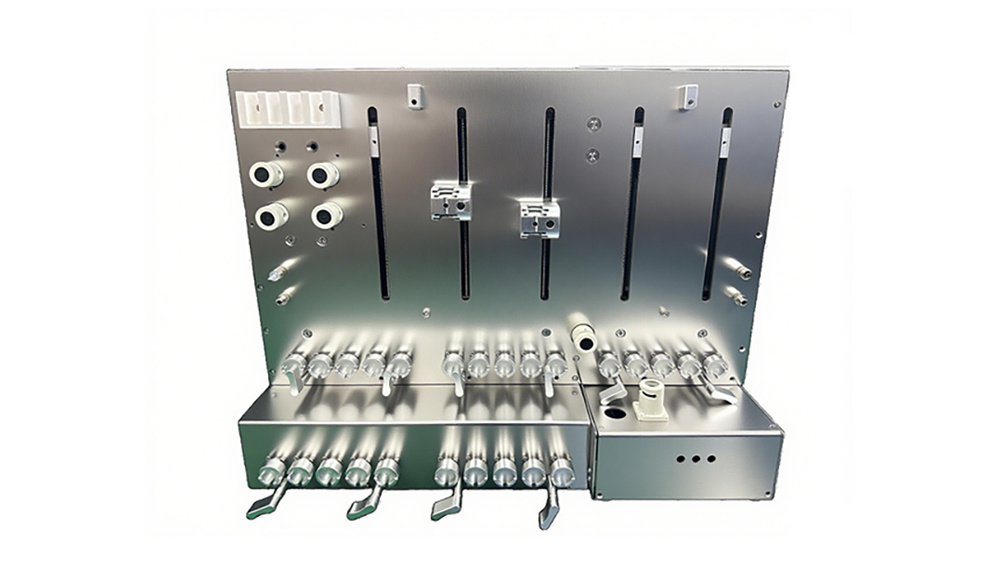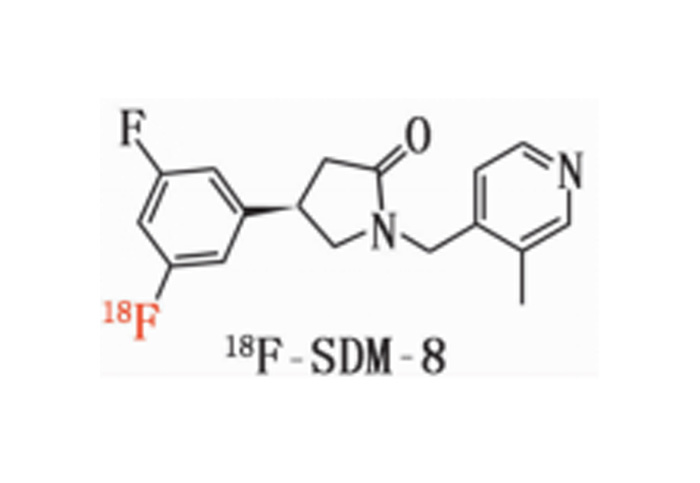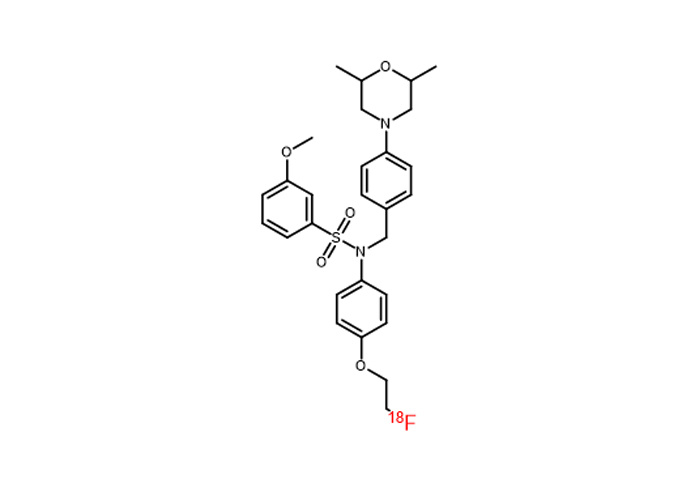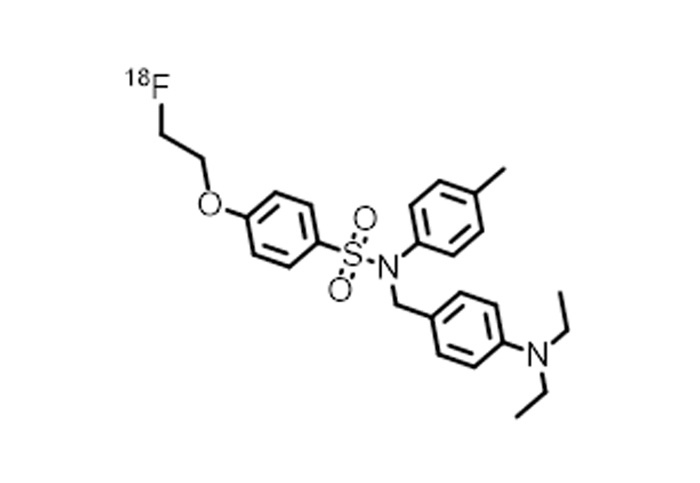
Products
Built multiple sets of modular, multi-functional intelligent drug automatic synthesis platform
18F-DPA-714 material
Keywords: synthetic equipment disposable consumables
Classification:
Tracers

Hotline:
18F-DPA-714 material
Graphic Details
18F-DPA-714 material
1. Drug name (generic name, chemical name, English name, Pinyin, if there is a customized name, the basis of naming should be explained)
Generic name: 18F-DPA-714
Chemical name: 18F-DPA-714(英文全称为:N-[2-[(4-chlorophenyl) methyl]-6-methylpyridin-3-yl]-2-(18F) fluoroacetamide)
methyl]-6-methylpyridin-3-yl]-2-(18F) fluoroacetamide)
Pinyin: yī bā F-DPA-qī yī sì
2. Chemical structure, molecular weight and molecular formula of the drug
chemical constitution:
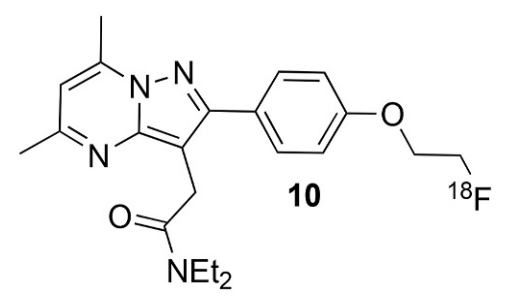
Molecular weight: 294.72
Molecular formula: C15H12ClFN2O
3. Basis of the topic (literature on the development and application of this product at home and abroad)
The basis of the topic
Neuroinflammation plays a crucial role in the onset and progression of various neurological diseases, such as Alzheimer's disease, Parkinson's disease, epilepsy, and autoimmune encephalitis. Microglia, as immune cells in the central nervous system, are key markers of neuroinflammation when they become activated. 18F-DPA-714, a specific microglial imaging agent, binds with high affinity to the 18kD translocation protein (TSPO) on microglia. Through positron emission tomography (PET) technology, 18F-DPA-714 can non-invasively and in real-time monitor the activation status of microglia in vivo, providing important imaging evidence for early diagnosis, disease assessment, and monitoring treatment efficacy in neurological disorders.
Domestic development situation
The project "Experimental Study on the Inflammatory Mechanism of 18F-DPA714 Microglia Molecular Imaging and Anti-inflammatory Intervention Efficacy Monitoring in AD" undertaken by Zhao Jun's team from Fudan University successfully synthesized the 18F-DPA-714 neuroinflammatory molecular probe. The optimized labeling conditions are: a 6.7 mg/ml precursor solution mixed with K-F-K2.2.2 at 105℃ for 10 min, yielding a radiochemical yield of 40.3 ± 5.1%, with a radiochemical purity of ≥ 99%, and a synthesis time of approximately 20 minutes.
Domestic application
- Diagnosis of autoimmune encephalitis: In March 2024, the Department of Nuclear Medicine and Neurology at Ruijin Hospital collaborated to publish a paper in the journal *Radiology*. The study involved 25 patients diagnosed with autoimmune encephalitis (AIE). The findings from the 18F-DPA-714 PET/MRI imaging revealed that the positive detection rate for PET was 72%, while MRI only reached 44%. This suggests that 18F-DPA-714 PET has potential value in detecting AIE.
- Preoperative Localization of Refractory Epilepsy: In a research paper published in the international authoritative journal *CNS Neuroscience & Therapeutics*, Professor Lu Jie's team retrospectively included 43 patients with refractory epilepsy who underwent surgical treatment. They analyzed their preoperative 18F-FDG and 18F-DPA-714 dual-tracer PET/MRI imaging data, finding that 18F-DPA-714 has the potential to become an important tool for preoperative localization of epileptogenic areas and precise definition of lesions in patients with refractory epilepsy.
- Parkinson's disease research: The Department of Nuclear Medicine of Harbin Medical University successfully synthesized 18F-DPA-714 neuroinflammatory imaging agent and applied it to the study of Parkinson's disease, helping the application of nuclear medicine molecular imaging in the province.
Foreign application
18F-DPA-714 is also widely used in the study of neurological diseases abroad. For example, in Alzheimer's disease research, PET imaging using 18F-DPA-714 revealed a significant increase in 18F-DPA-714 uptake in brain regions associated with neuroinflammation, and this uptake was correlated with the severity of the disease. In studies on patients with "long COVID," 18F-DPA-714 PET was used to observe levels in the brain, assessing the activation of microglia in the brain's neural system for inflammation, finding that microglia in the brains of "long COVID" patients were highly active. Additionally, in other neurological conditions such as multiple sclerosis and stroke, 18F-DPA-714 has been used to monitor changes in neuroinflammation, providing important imaging information for the study of pathophysiological mechanisms and treatment interventions.
4. Instructions for drugs
Generic name: 18F-DPA-714
Chemical name: 18F-DPA-714(英文全称为:N-[2-[(4-chlorophenyl) methyl]-6-methylpyridin-3-yl]-2-(18F) fluoroacetamide)
Pinyin: yī bā F-DPA-qī yī sì.
[element]
The main component and its chemical name of this product are: TSPO protein with its structural formula
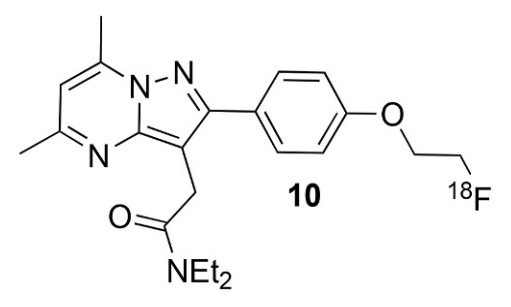
[shape and properties]
This product is a colorless and clear liquid
[indication]
18F-DPA-714 is used for epilepsy, neuroinflammation, metabolic diseases, brain tumors and degenerative diseases
[18F-DPA-714 PET/CT brain imaging process]
1. Preparations before inspection
Patient prepared
Fasting for 6 hours before examination, maintain blood glucose ≤7.0 mmol/L (insulin injection if necessary)
Discontinue drugs that may interfere with TSPO expression (such as glucocorticoids)
Medication preparation and injection
The 18F-DPA-714 dose was calculated according to body weight (commonly used in adults 185-370 MBq) and administered slowly intravenously.
2. Injection of imaging agent and resting period
Rest after injection
Rest for 60 minutes, avoid activity, bright light or external stimulation, and ensure that the imaging agent is fully combined with TSPO.
Keep the environment quiet and reduce non-specific uptake of the brain
PET/CT gather
Mode: 3d dynamic or static acquisition (choose according to research needs).
Time: Static scanning takes about 10-15 minutes, and dynamic scanning needs to be extended to more than 60 minutes
Scope: full brain coverage, key areas (such as temporal lobe, hippocampus, etc.) to ensure clear signal
The scan should be performed 50min after the injection of the imaging agent. The CT and PET acquisition parameters and reconstruction methods should be consistent with the brain 18F-FDG imaging. The scan group should strictly control the injection time and scan time, and strictly record the scan time.
Image interpretation and analysis: timely interpretation of images.
Report: Report in time.
Follow-up: 18F-DPA-714 and 18F-FDG brain imaging should be performed at least 10 half-lives (or 20 hours) apart.
This product is only for use in medical units with a radioactive Drug Use License.
[untoward effect]
Not yet found.
[taboo]
Not yet found.
[matters need attention]
If this product changes color or becomes cloudy, stop using it.
This product is only for use in medical units with a radioactive Drug Use License.
[Pregnant and lactating women]
Pregnant and lactating women are prohibited from using.
[Medication for children]
Reduce the dose appropriately according to body weight.
[specifications]
0.37~7.40GBq。
[Storage and packaging]
This product is sealed in a 30ml vial and placed in a lead container.
[term of validity]
The time from calibration is calculated as 6 hours.
[production unit]
Name: Hangzhou Jirui Technology Co., LTD
Address: Fengqigu Yunzhang Industrial Park, No.319 Shenjia Road, Gongshu District, Hangzhou City
Zip code: 234122
Phone number: 0571-87701916
Previous Page
18F-AV133 material
Next Page
Related Products
Consulting

